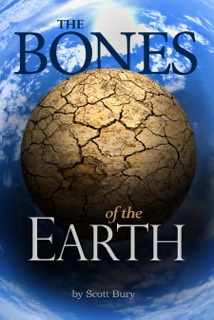 Today is Midsummer’s, the Summer Solstice, long regarded as a special day by humanity.
Today is Midsummer’s, the Summer Solstice, long regarded as a special day by humanity.
This year, the full moon was just a few nights ago—also an auspicious time for mystics and sky-watchers.
The Bones of the Earth, my first published novel, begins at midnight on the Summer Solstice, under a full moon. That coincidence does not happen often.
Here is a sample from that solstice day, 1,500 years ago.
Chapter 2: The rescue
Look down. Two young men, boys really, walk across the meadows and forests on the southern slopes of mountains that rise gently, then heave up suddenly to angry grey crags occasionally topped by snow. One of the boys is very tall, with long yellow-gold hair. His long legs propel him swiftly across a meadow thick with yellow and purple flowers. He pays no attention to flies buzzing around him, to crickets and rabbits that leap out of his way.
His companion is smaller with tangled, long black hair. Blotches of soft black fuzz swirl around his chin and down his neck. He scurries to keep up with the blonde’s strides and is out of breath. They have been walking fast, nearly running, for hours. It is the solstice, some time past the year’s highest noon. Birds are quiet in the hottest part of the day, but insects chirp and hum and trill. Leaves on the trees are still a light green, not yet burned dark by the summer. The air is warm, not hot, not yet.
The dark one gets more anxious with every step. But all morning, the blonde boy has ignored him. The dark boy recognizes this trait in his friend: his ability to focus on one thing to the exclusion of everything else, for hours at a time. In their village, he was called “the dreamer,” or worse. Even in normal circumstances, you had to call him by name two or three times to get his attention. But now, he is following the trail of horsemen, mounted raiders, and no matter how many times the dark boy calls “Javor,” no matter how futile the quest, he cannot be pulled away.
Sometimes, it is easy to see the trampled grass or broken twigs and bushes, or a torn bit of cloth on a branch. Often, the light-haired boy seems to follow signs that his dark companion cannot see, and every time the dark boy doubts his friend and thinks they have lost the trail, he sees another sign—horse droppings, the surest of all, or once, a girl’s colourfully embroidered apron.

The dark boy begins touching every oak and birch tree they pass to pray to their spirits for protection, help, sanity for his friend. “You know, we keep going east. East is bad luck, Javor,” he puffs as they start up a slope.
Javor ignores that, too. At the crest of a ridge, he looks around, sees something that his friend cannot, continues at his same obsessive pace.
“You realize,” his friend says, trying hard to keep up, “that we fall farther behind them with every step we take. They’re on horses.” Still no response, so he reaches out and grabs Javor’s arm, forcing him to stop.
The blonde turns and looks at his friend without recognizing him. “Javor, we’re chasing mounted warriors,” the dark boy repeats. “We’ll never catch up.”
Javor blinks and looks uncomfortable. He seems to realize where he is, comes out of the trance he can put himself into.
“We’ve been chasing them for hours, and we have no more hope now of ever catching up to them than we ever did. Let’s go back home.”
“Home?” Javor says it like he has never heard the word before. “No. We have to get the girls back, Hrech.”
Javor looks at Hrech, his best friend—his only friend—but what he sees is the morning in the village, all the villagers in their best, whitest clothes, the men in their embroidered vests, women in embroidered aprons and garlands of flowers, all standing in a circle around the oak tree on top of the holy hill.
He remembers how Vorona, the shaman, led the villagers in the hymn to Zaria, the heavenly bride of the sun, to pull the sun over the horizon. They lifted freshly-cut maple branches and sang to the kupalo, the spirits who came out of the forest at the end of winter to spend the summer under the growing grain. The sun rose; Javor saw Elli wearing flowers in her hair, dancing with the other marriageable girls in a separate circle around Grat, the popular girl who had been chosen to be kupailo. The kupailo girl threw out wreaths of flowers; the girls who caught them would be married by fall. The kupailo was supposed to be the most beautiful, but Javor thought Elli was prettier than Grat.
Javor watched intently, hoping and at the same time dreading that Elli would catch a wreath. Before she could, they heard a rapid drumming noise. Someone yelled “horsemen!”
The Bones of the Earth
The Dark Age, eastern Europe: the earth has decided to rid itself of humanity with earthquakes, volcanoes and new plagues. Civilizations, even the mighty Roman Empire, crumble under the pressure of barbarian waves that are fleeing worse terrors.
Rejected by his own people, pursued by a dragon, young Javor heads for Constantinople, the centre of civilization, looking for answers to the puzzle of his great-grandfather’s dagger and the murder of his family.
On the ancient, crumbling Roman highway across haunted, deserted Dacia, Javor rescues the beautiful Danisa from a human sacrifice. He cannot help falling in love with her. But Danisa has her own plans, and when she is kidnapped again, Javor has to wonder: what is the connection between his dagger, his lover and his enemies?
Get it as an e-book from:
Get it in paperback from:
